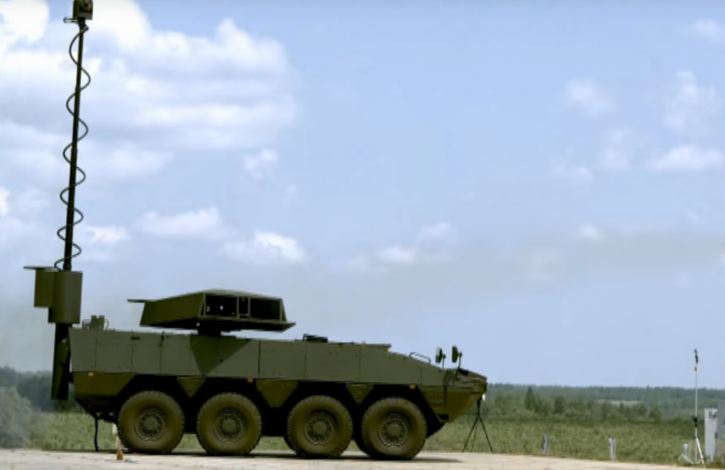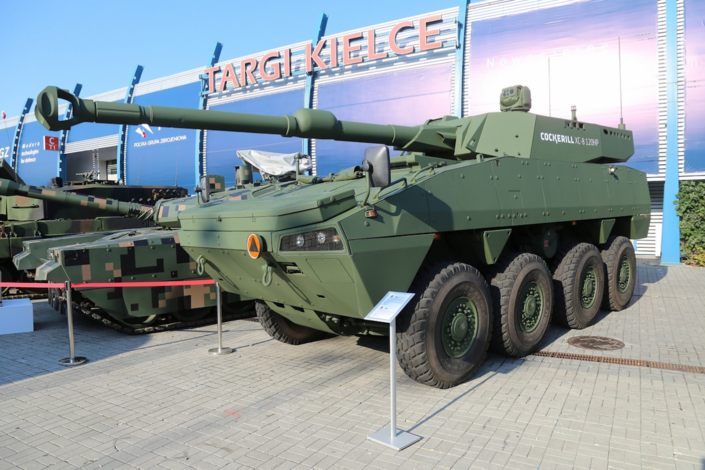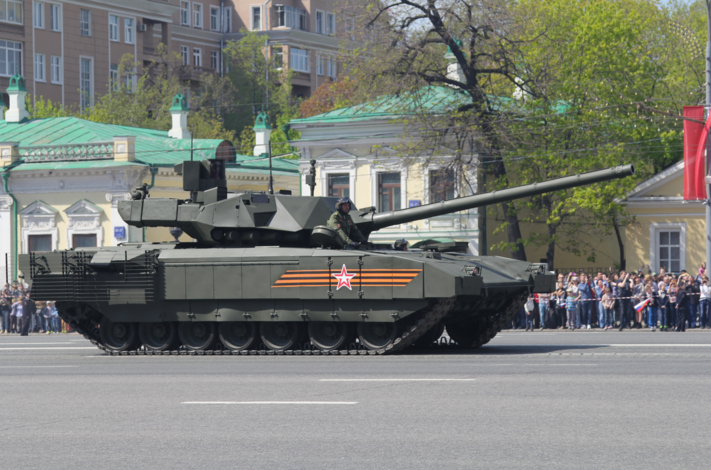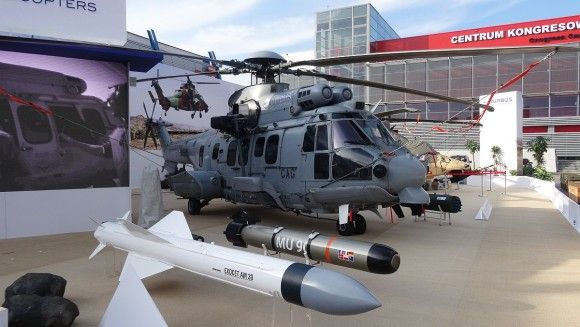- WIADOMOŚCI
Polish Army’s Tank Destroyers. Against the Active Armour [Commentary]
Polish Armed Forces are interested in acquisition of modern tank destroyer class platforms. The vehicles are also expected to be capable of acting against targets protected by the active vehicle protection systems. Thanks to the above, the newly procured carrier could be utilized to act against the main battle tanks characterized by the heaviest armour protection.
The Armament Inspectorate has announced that a market analysis has been initiated, within the scope of obtaining the capabilities of acting against armoured targets and main battle tanks by a prospective tank destroyer-class platform. The announcement pertaining to the procedure places an emphasis on the fact that the assets to be acquired are to be tasked with acting as a countermeasure, targeted against the “latest generation” armoured threats, also utilizing active protection solutions.
The Army remains interested in acquiring tank-destroyers that would be capable of acting against targets protected both by the “soft-kill” (jamming and neutralizing the guidance systems of the ATGMs), as well as by the “hard-kill” (destroying the effector by shooting it down) protection systems.
The above issue remains quite relevant, as most of the modern ATGMs are capable of using interference and jamming countermeasures (e.g. targeted against the Russian Shtora class suites), and it remains increasingly more difficult to avoid the neutraliser shooting down the effector (with the neutraliser being launched by systems such as the Israely Trophy, or Russian Arena and Afghanit solutions, with the latter one to be implemented in case of the T-14 Armata main battle tanks).
Utilizing ATGMs that strike the target from the top-side (such as the Spike-LR system operated by the Polish Army) may turn out to be a good intermediary solution. On the other hand, some solutions exist or are being developed, allowing the user to fire the neutralisers also against the “top attack” ATGMs.
The requests and proposal submissions, within the scope of the market analysis procedure, will be accepted until 31st May. The Armament Inspectorate of the Polish MoD notes that the aforesaid requirements shall be met by an ability to act with the use of direct fire, conventional measures and with the use of ATGMs.

Utilization of cannons, firing a variety of kinetic projectiles, or ATGMs – various options are being considered here. As mentioned above, the latter ones are easier to be neutralized by an active “hard-kill” class protection system. Not only does this happen due to their lower velocity, but also due to the principle of operation of the weapon, as the warhead acts against the target with the use of explosives, instead of using its own kinetic energy.
At the moment, the Polish Army Army has only the obsolete BRDM-2-based tank destroyers at its disposal. The said platform utilizes the 9P133 Malyutka-P ATGM as the main weapon. A small number of vehicles fitted with the Konkurs launchers, operated by the 14th Anti-Tank Artillery Regiment (currently belonging to the 14th “Suwalski” Anti-Tank Artillery Squadron), has been decommissioned, as these platforms have reached the end of their service lifetimes. Similar steps, e.g. withdrawal of the M901 platform from the mechanized units of the US Army, or withdrawal of the German Jaguar vehicles, have been also taken in other Armies, without introduction of any successor.
However, the tank destroyers are still being operated by a number of lighter units of the US Army and Bundeswehr (Wiesel TOW). The US Stryker brigades, as well as the Battalion Battle Group detached from the 2nd Cavalry regiment and stationed in Orzysz, utilize both cannon-armed tank destroyers (105 mm cannons), as well as vehicles fitted with the TOW ATGMs, with both types based on the Stryker platform.

The defence industry also showcased armament of similar class, designed for the Rosomak APC or for the AMV carrier, which is the base platform for the Polish carrier platrform. The aforesaid vehicles may be fitted with CMI Defence turrets, featuring 105 and 120 mm cannons. Moreover, test programmes pertaining to integration of the AMV platform with Hellfire and DAGR ATGMs have also been carried out. Obviously, currently it remains very difficult to assess whether the Ordering Party is inclined to order Rosomak-based vehicles, or to procure other solutions based on different platforms. The shape of the programme remains undefined, same adjective may be ascribed to its implementation, however the aforesaid options may be indeed taken into account.
One of the relevant issues is seen in creating a requirement to act against the targets protected by the “hard-kill” class active protection systems, among other solutions. It shall also be noted that several attempts at finding a solution that would make it possible to neutralize the active armour had been made before, e.g. in a form of kinetic ATGMs that travel at the speed that is a couple times higher than the speed of sound, acting against the targets in a manner similar to the one ascribable to a conventional sabot round - utilizing the kinetic energy. US-made LOSAT system may be viewed as a prime example here, including Humvee-based launchers.
Read more: Polish Armed Forces Eye Acquisition of New ATGMs
The development works concerning the aforesaid system have been cancelled, as the existing missiles used by the US Army, such as Javelin or TOW-2, have been considered to be sufficient. As mentioned above, the aforesaid missiles remain capable of acting against targets protected by ERA or by the active “soft-kill” systems. Meanwhile, other solutions capable of shooting down the ATGMs, including those more advanced, have not been introduced in the Russian Army yet, due to the high cost level entailed.

There is one more issue which remains unresolved: will the Americans try again to undertake the effort to develop a relevant solution to the described problem, considering the fact that Russia is driven towards introduction of T-14 main battle tanks into the active service? Armata will be, inevitably, equipped with an advanced active protection suite. It is also stated that in-depth upgrades of the Arena systems may also be introduced in case of the T-90 and T-72 main battle tanks, operated by the Russian Army at the moment. This would be quite problematic, from the point of view of the NATO member states.
The decision related to initiation of a market analysis covering the area of the capabilities of acting against heavily armoured targets by tank-destroyer-class platforms is yet another step, taken recently in order to address the issue of armoured threats. Polish Ministry of Defence had also been informing that the Armament Inspectorate is gathering the relevant data, required to acquire multiple-use anti-tank grenade launchers and a new type of ATGM – also know under the name of Karabela. Territorial Defence component of the Polish Army is also to receive ATGMs procured within the framework of the Pustelnik programme.
The acquisition of the systems discussed here would make it possible to significantly reinforce the anti-tank capabilities of the Polish Army, that have been left aside for some time now. Nonetheless, one should remember that the process is long, starting from the analytical-conceptual phase, finishing with acquisition. The dialogues or market analyses pursued do not necessarily translate into prospective introduction of the new equipment into use within the inventory of the Armed Forces.
Despite the above, the activities undertaken by the Polish Ministry of Defence should be assessed positively, as at least to some degree the considerations concern the equipment that had not been planned to be procured before, while the current modernization initiatives are being tailored to the rapidly evolving threats. It is worth to note that the problem of active protection systems has been addressed. These systems may potentially pose a threat for the anti-tank potential of the NATO member states remaining in possession of the advanced, tandem-warhead ATGMs. The most important challenge is seen in completion of the individual proceedings, and in introduction of new equipment into the inventory of the Polish Army, to bridge the gap that has been formed in the area of the anti-tank weapons, throughout the years.


















